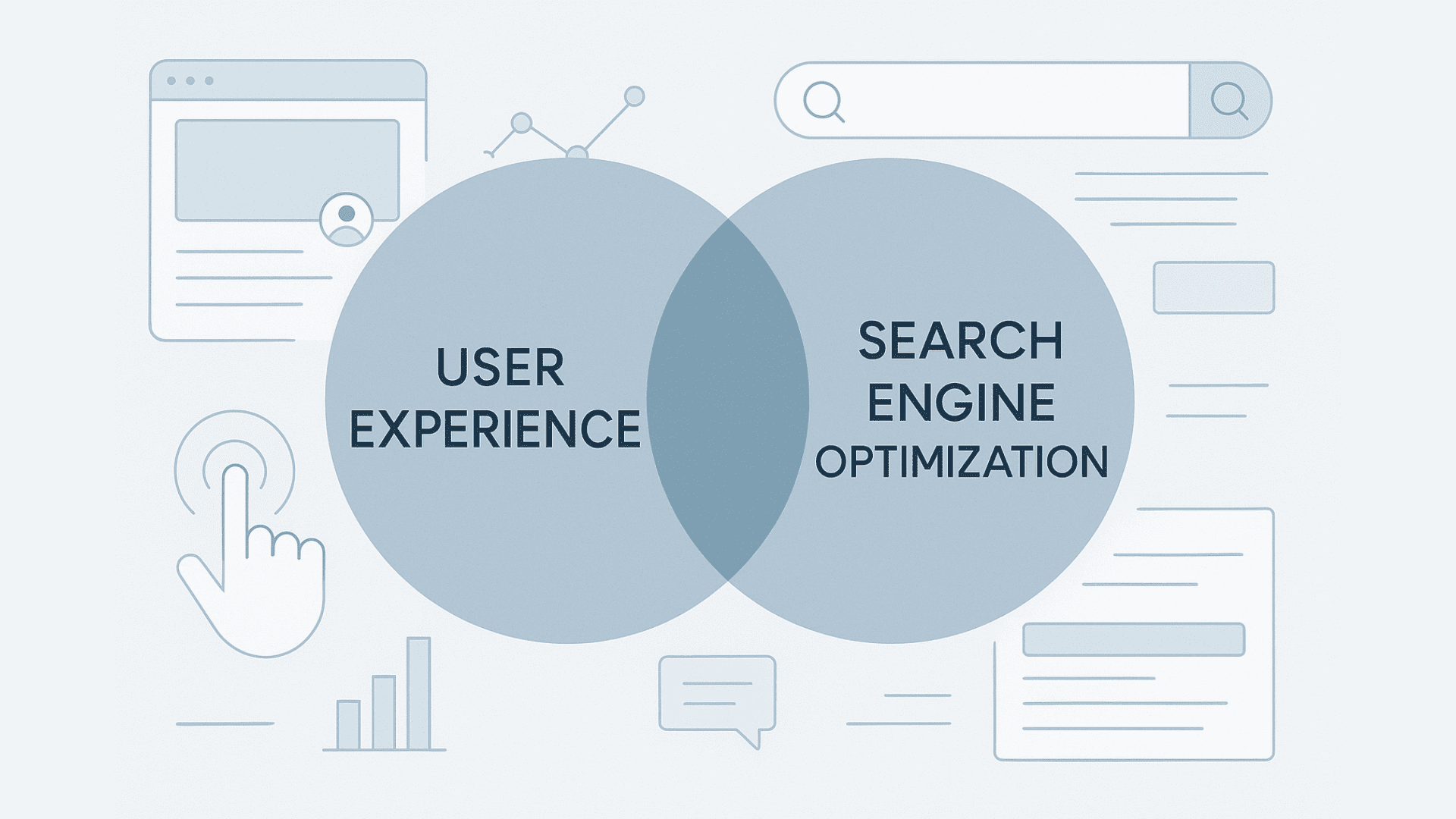UX and SEO are no longer separate, Google now ranks websites based on user satisfaction signals like speed, mobile usability and accessibility. Design decisions such as site speed, navigation, readability and accessibility directly impact rankings. By aligning UX with SEO and making your content AI-ready, you future-proof your digital presence, boost visibility, and drive engagement.
Why UX and SEO Are Now Inseparable
Traditionally, SEO was about keywords and backlinks, while UX focused on usability and aesthetics. But today, Google’s algorithms prioritize user satisfaction, measured by signals such as:
- Core Web Vitals: Page load speed, responsiveness and visual stability.
- Mobile usability: How well your site adapts to smaller screens.
- Engagement metrics: Bounce rate, dwell time and click-through behavior.
When UX suffers, SEO performance declines. If users can’t easily navigate, read, or interact with your site, they leave and Google takes note.
5 UX Design Decisions That Affect SEO Rankings
1. Page Speed & Performance
Slow websites frustrate users and damage rankings. Optimizing images, streamlining code and investing in fast hosting all improve both UX and SEO.
2. Mobile-First Design
Over 60% of searches happen on mobile. A responsive, touch-friendly layout ensures users (and search engines) can access your content seamlessly across devices.
3. Navigation & Site Architecture
Intuitive menus, clear headings and logical structures help users find what they need, while giving Google a better understanding of your content hierarchy.
4. Content Readability
Design elements like font size, spacing and contrast directly affect readability. Well-structured, scannable content keeps users engaged, lowering bounce rates and improving ranking signals.
5. Interactive & Accessible Elements
Accessibility features, like alt text, ARIA labels, and keyboard navigation, aren’t just inclusive. They also make your site more indexable, enhancing SEO visibility.
The Role of AI in UX & SEO Integration
With AI-powered search and large language models (LLMs) like ChatGPT reshaping how users discover content, websites must be structured for both human readability and machine interpretation. This means:
- Writing clear, context-rich content that AI can summarize accurately.
- Using semantic markup and structured data to help search engines understand meaning.
- Designing for conversation-friendly navigation, as voice search and AI-driven queries grow.
By aligning UX and SEO with AI-readiness, your website becomes future-proof, ready for both Google’s evolving algorithms and AI-driven discovery engines.
Action Steps: Designing for Better Rankings
- Audit your website’s Core Web Vitals.
- Simplify navigation for both humans and bots.
- Prioritize mobile-first and responsive design.
- Use accessible, semantic HTML to enhance both inclusively and SEO.
- Create AI-ready content that answers questions clearly and concisely.
Final Thoughts
The line between UX and SEO has blurred. Every design decision, from page load times to button placement, impacts not just user satisfaction but also your search rankings.
At DSRPT, we specialize in building websites where design, performance and visibility intersect. By aligning UX and SEO, we help businesses achieve stronger engagement, higher rankings and measurable growth.
👉 Want to optimize your site’s design for both users and search engines? Get in touch with us today.

